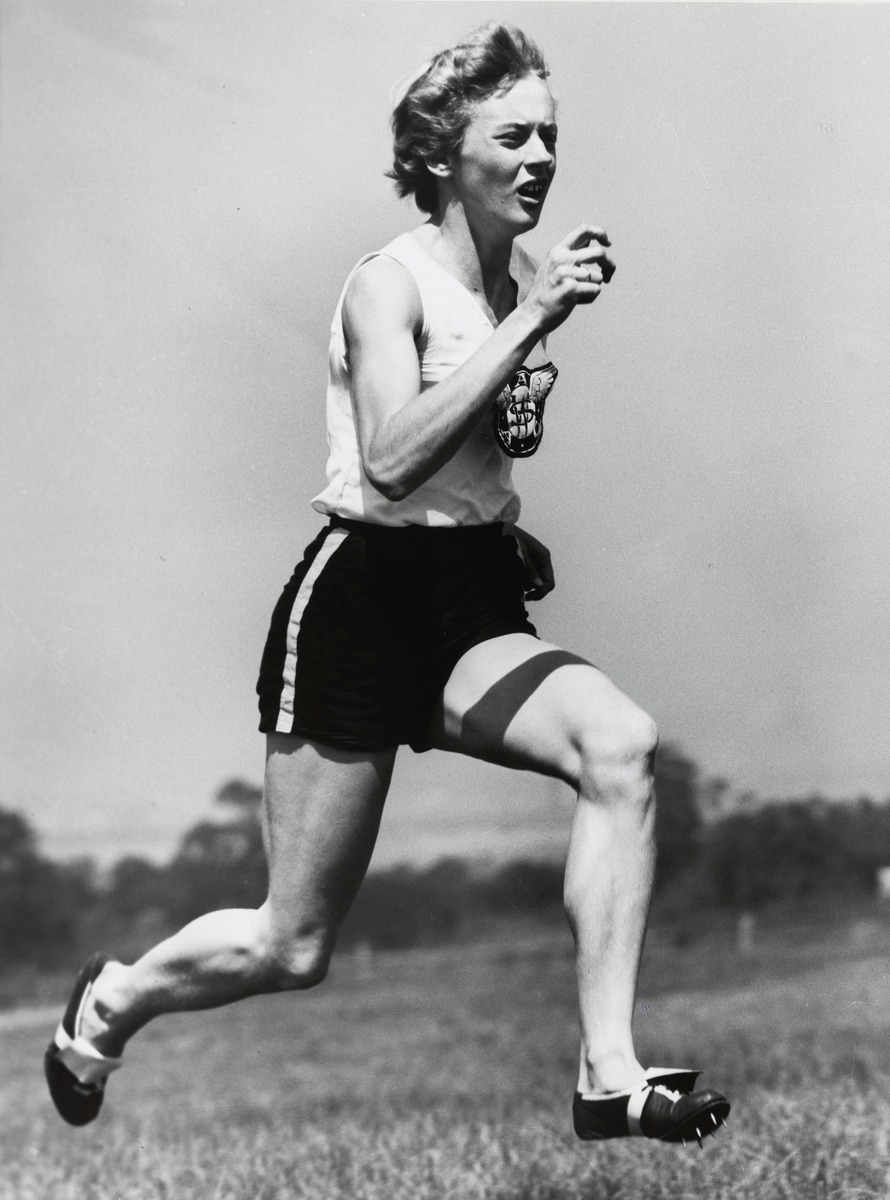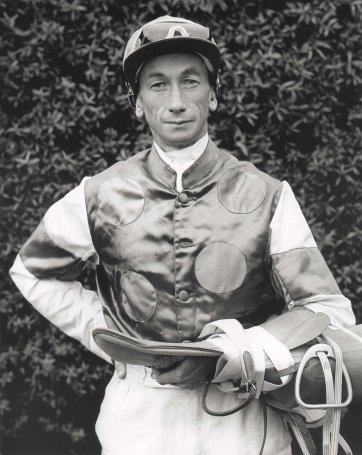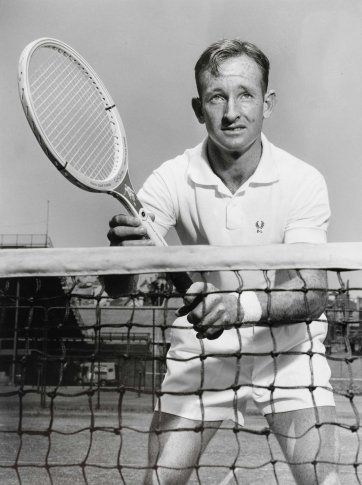Now in his late seventies Ern McQuillan, is still taking photographs. He started his career at fifteen, working on the Truth and Sportsman newspapers and has worked for the Woman's Weekly, the Sunday Telegraph, the Daily Telegraph and the Bulletin, capturing many decades of sporting highlights and identities in Australia. The son of famous boxing trainer Ern McQuillan (senior), Ern also boxed professionally for two years, sparring with world-rated fighters such as George Henry and Benny Evans
He abandoned the sport when his news editor demanded that he stop going out on photographic assignments with black eyes and split lips. From his home in Sydney, Ern shared with Simon Elliott some insights into three of his key images included in the exhibition Depth of Field.
Ern, the image of Lew Hoad playing tennis to a capacity crowd in White City in 1956 is for me one of your most outstanding images. It beautifully demonstrates Hoad's great athletic ability but you have managed to capture something of the relationship between spectators and sportspeople. Could you tell me what the photograph means to you?
Well, you know it is one of my favourite shots. The crowd at White City was over 27,000 people and was so dominating. I thought this has just got to make a picture, an action shot of the Australian champion, Lew Hoad playing that backhand shot, up on his toes with this massive crowd at the back. I was working on the Daily Telegraph at the time and this picture just stood out. It was the showpiece of the whole tournament, I thought.
I can't understand why the other papers didn't do the same at the time.
When Lew was at his top, especially in 1955, 1956, 1957. in my opinion, he was unbeatable. He was a great tennis player, but he had a lot of trouble with his back and I think that was the cause of his retirement. He was a great bloke to work with too - so co-operative, he couldn't do enough for you When Lew saw the picture, he took it back to Spain where he was living at the time and had it in his house. He was very enthralled with that particular picture too.
In the case of Lew Hoad you captured that sporting moment. Such action shots of sportspeople are the 'norm' in press sports photography, but with your image of Betty Cuthbert you also managed to reveal something of her great personal intensity.
I hope so. Everyone thinks I took that photo at some important racing event, but the truth is I took it down at her local park! I went out to photograph Betty in 1955, prior to the Olympic Games. She had won the NSW Championship, 100 metres and practically everything else. She was a very popular runner and a most cooperative girl. She was living with her family at Ermington and her Dad had a plant nursery there. I took pictures of her in the nursery, watering the plants and doing bits and pieces. After we had finished doing the pictures at the nursery I said 'Betty, look would you mind putting your running gear on and let's get some good action shots of you across the road in the park'. She said 'No, not at all'. So, she put her gear on and we went over the road and took three or four pictures of her running. Simple as that! The park is gone now. Its just a big industrial area and as a matter of fact, the nursery is still there and is called Cuthbert & Son P/L. Betty, as you know, won three gold medals at Melbourne and then she won another gold medal at Tokyo in 1960, so she won four gold medals during her career.
There is also another interesting story behind one of your most well known images - the iconic photograph of champion jockey, George Moore.
Yes, I took that picture in 1957 when George was riding Tulloch (the great Australian race horse, probably the best horse since Phar Lap in my opinion). I first met George in 1950 when he came down from Queensland to Sydney and I have been friends with him ever since. He was undoubtedly Australia's greatest jockey. He won more than ten Sydney Jockey Premierships and he rode over 2,000 winners over in England and abroad, including 119 group one Australian races - a phenomenal record.
Do you remember the location of the shot?
It was taken at his home when he was living at Vaucluse. In those days there were no managers controlling the athletes or the jockeys as there are nowadays. I went there especially to take the picture and when I arrived he was playing tennis in the backyard with some friends. I did some action pictures of him playing tennis then I took pictures of him with his wife. Iris, and his children and pictures of him looking at movies, races -a complete series.
Once that was done I said, 'George, look I have to get a shot of you with your jockey gear on.' 'Okay mate, but do I have to put my britches on?' He had a pair of nice white clean tennis shorts on at the time. I said no, leave them on. So, there's George all dressed up in his jockey gear in a pair of tennis shorts which I cut out of the image.

















